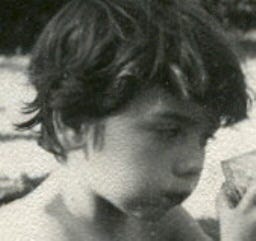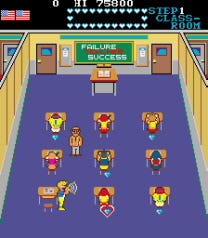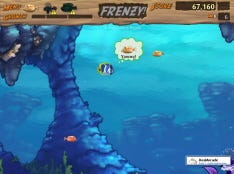Trending
Opinion: How will Project 2025 impact game developers?
The Heritage Foundation's manifesto for the possible next administration could do great harm to many, including large portions of the game development community.
Casual games are sometimes criticized for 'lack of innovation' , but in this exclusive Gamasutra opinion piece, game designer Juan Gril compares classic arcade games to today's casual market, arguing for a blend of incremental and radical innovation to move the sector forward.

It's a tough life, the life of a casual game designer. Because frankly, after reading articles like the "Attack of the Parasites", and the gazillion times that the "Puzzloop good/Zuma evil" debate appears in industry-related magazines, web sites and forums, one starts to wonder if "innovative casual game design" is an oxymoron.
It's tough, it's true. But somehow "casual games" are working. With welcome additions by Nintendo with its simple games for the Wii, and by EA legitimizing the trend by creating its own casual games division, things seem to be improving.
But still, people still play and buy more Bejeweled than any other casual game on the Wii. And why is that? Leaving aside for a minute the fact of convenience (as Bejeweled runs on almost every device Popcap has been able to port it to), there is something compelling about it that the audience finds to be fun.
Nobody in the industry considers Bejeweled to be innovative (as history proves, it's a derivative work and not a radical innovation), so in general the word "innovation" along with "casual games" has been rarely used.
The definition of innovation is something interesting in itself. Here is what Merriam-Webster Online has to say about it:
"the process of making improvements by introducing something new,
a new idea, method or device."
Wikipedia expands the concept, talking about "product innovation":
"...involves the introduction of a new good or service that is new or substantially improved. This might include improvements in functional characteristics, technical abilities, ease of use, or any other dimension."
And it specifies that innovation can be considered "incremental" or "radical":
"Incremental innovation is a step forward... from the known to the unknown, with little uncertainty about outcomes and success and is generally minor improvements made."
"Radical innovation involves larger leaps of understanding, perhaps demanding a new way of seeing the whole problem... There is often considerable uncertainty about future outcomes... Radical innovation involves considerable change in basic technologies and methods, created by those working outside mainstream industry and outside existing paradigms."
We game designers LOVE radical innovation. When we think about using the word "innovative" to describe a game, we are thinking of a game such as Katamari Damacy -- something completely out of the box. This makes a big influence in what games we consider to be innovative.
But what about players?
My name is Juan Gril, and I design casual games for a living. Part of my job is to figure out what casual gamers want, and what "clicks" with them. In contrast to some of my peers in the enthusiast-driven video game industry, I've been raised playing a different type of games than some of the ones I design. In fact, sometimes I design games that I wouldn't play (not a big fan of match-3 here, even when a "quest" is added to it). So in order for me to understand the player, I had to put myself in their shoes for a bit.
How did I feel about games when I didn't know what game design was?
This was me...

And this was my game...

In 1978 Space Invaders changed my life. Here was a way for me to play that was completely different than anything I have done before. Video gaming was an activity that was going to become a very important part of my life, and I've never looked back.
And a year later, Galaxian was the game...

And this is how I felt about it...

Galaxian was a game that had its own innovative elements, but it was based on the core mechanic originally seen in Space Invaders. So as I was spending every available financial resource I could find on Galaxian, around the world, game designers were looking at it. Just for kicks, I imagined a late '70s Japanese game designer talking about Galaxian as we do about some games on industry forums...

And this is what I felt after that thought...

After my initial laugh, I wondered to myself: didn't I care for innovation? Was my perception of innovation different from what it is today? I decided to find out and compile a list, looking at the games I played in the first few years of video gaming at the arcades.

I was an "incremental innovation" player! Each of these games did not radically change the core gameplay of Space Invaders, but gradually and over the years, they created new experiences for me. I'm really fond of them, and I have great memories.
Why was I playing shoot 'em ups?
It was a fun game mechanic.
I was good at them, and winning was rewarding to me.
There was something really new in each game that came out.
But do casual players do the same thing today? Is it possible that casual game players are feeling the same way as I did? That is -- they like a particular game mechanic and play the new games as long as they have something new?
I decided to find out by creating a list of match-3 hits over the years. So I looked into the archives of the Real Arcade ranking, and I created a list of match-3 games which have sustained more than 4 weeks in the top 10 (which is usually a pretty good sign of success in sales in the casual gaming world).
2001
Diamond Mine (Bejeweled)
2002
Super Bounce Out
Cubis Gold (pictured)
2003
Tip Top (pictured)
High Roller
Mind Your Marbles
Walls of Jericho
Chainz

2004
Bounce Out Blitz
Jewel Quest (pictured)
Mad Caps
Cubis Gold 2
Bejeweled 2
2005
Big Kahuna Reef (pictured)
Chuzzle (pictured)
Bewitched
Chainz 2
Gem Shop
Rainbow Web

2006
Legend of Aladdin
Wonderlines
7 Wonders
Da Vinci Code
Sky Bubbles
Jewels of Atlantis
Treasure Island
Diamond Detective (pictured)
2007 (so far)
Treasures of Montezuma
Jewel Quest 2
Burger Rush (pictured)
Cradle of Rome
Rainforest Cascade
It turns out that when you clean out the list, and only look at the hits, in most cases they have a unique feature. Curiously enough, no game that could be considered a "clone" (a game that doesn't have any new gameplay feature) enters the list. I invite you all to play these games -- after all, they are available online and are free for the first hour.
Of course, this is just incremental innovation over one particular genre of casual games. But interestingly enough, the casual gaming audience is doing what I did almost 20 years ago: they look at what is fun based on familiarity, and they try to find a new experience... as long as they don't take a huge risk.
Sounds like a lot of decisions we take in real life, isn't it?
Is incremental innovation the answer to the evolution of casual games? No, not completely. Every form of media (as this is not just tied to videogames) needs to invest in radically new ideas, hoping one of them will "click" among the audience and create a new genre.
Going back to my personal experience, there were a lot of people who were put off by Space Invaders. My best friend, a car fan, didn't get into videogames until Pole Position came along. My cousin would not step into an arcade until Pac-Man changed her life. I'm sure all of you have similar stories.
Each player has unique tastes:

In 1984 we had the space shooter type of player, the racing game type of player, the fighting game type of player, the maze game type of player, and more.
In 2006 we had the match-3 type of player, the hide-and-seek type of player, the management game type of player, and the simulation type of player, and more.
Different types of games keep the interest of people who enjoy the activity of video gaming. These games not only bring new players, but also keep the interest of existing ones. By 1990 my reflexes weren't as good as when I was 12 years old, so I moved into strategy games. Now that I'm in my 30s, I play puzzle or radically new games on handhelds. I'm sure most of us who have been playing games for a while have switched genres over the years.
Do we have enough different types of games in casual games? Is it possible that the rampant perception of cloning is related to the fact that we just don't have enough different games?
I decided to try a similar exercise to what I've done before. I was going to create a list of unique arcade games available in 1984, compared with unique casual games in 2006, and see how the eras compare.
But first, I created a set of rules:
For arcade games, I'll pick the year 1984, six years after the launch of Space Invaders.
For casual games, I'll pick the year 2006, six years after the launch of Kyodai Mahjong -- it launched in 2000, and is considered one of the first casual games hits.
The game needs to be the most significant game for the genre among the ones launched in that particular year. Example: the most significant racing game in launched in 1984.
In the case of arcade games, ergonomics differences made a different game, as the control influenced the experience. So if a racing game was controlled with a joystick, and another had 3 screens in a cockpit, that will be considered a different game.
To determine what was popular in arcade games, I decided to pick only those which had wide availability.
To determine what was popular in casual games, I looked into Real Arcade and Logler's top 10 lists for 2006, and picked those games who stayed more than 4 weeks in those lists.
Here is what I found:

Bomb Jack
Boulder Dash
Buggy Challenge
Cobra Command
Do! Run Run
Circus Charlie
Duck Hunt
10 Pin Deluxe
10 Yard Fight
1942
8-Ball Action
Antarctic Adventure
40-0
Nintendo Baseball 
Excitebike
Hat Trick
Mikie
Hyper Sports
Karate Champ
Kung Fu Master
Nintendo Golf
Lode Runner
Marble Madness
Mr. Do Wild Ride
Paperboy
Pac-Land
Return of the Jedi
Punch-Out!!
Road Fighter
Root Beer Tapper
Space Ace
Tag Team Wrestling
Super Basketball
TX-1
What a fabulous list, right? If you were a gamer in 1984, I'm sure you remember some of these games. Ahh, nostalgia.
The results show that there were 34 unique game types in 1984. And to be fair, that number could be even bigger considering that the "shelf-life" of an arcade game machine is much bigger than a digital piece of software, so it wasn't uncommon to find a Space Invaders machine in the late 80s.
Another interesting result of this list is that comparing these games with games released during previous years, 13 of them were incremental innovations over existing game mechanics, but 21 of them were new game mechanics for the market:
Antarctic Adventure, Bomb Jack, Boulder Dash, Buggy Challenge, Cobra Command, Mr. Do Run Run, Circus Charlie, Duck Hunt, ExciteBike, Hat Trick, Mikie, Hyper Sports, Kung Fu Master, Lode Runner, Marble Madness, Mr. Do Wild Ride, Paperboy, Pac-Land, Punch Out, Road Fighter, and Root Beer Tapper.
Twenty one radically innovative games! When was the last time you could play so many new game experiences in one year?
After a big depressive moment, I took the strength to make the casual games list. Here it is:

Magic Match
Acropolis 
Gold Miner Vegas
Hotel Solitaire
7 Wonders
Mirror Magic 
Cake Mania

Mystery Case Files: Prime Suspects
Fish Tycoon
Mosaic: Tomb of Mystery
Family Feud
Super Collapse 3 
Feeding Frenzy 2 
Virtual Villagers
Luxor 2 
Westward
The result is that there were 16 unique casual games in 2006. But 11 of them were incremental innovations over existing game mechanics, and only five of them were new game mechanics introduced in the casual market (Magic Match, Fish Tycoon, Family Feud, which is an existing game but newly introduced to casual players, Virtual Villagers and Westward).
Just five. And there lies a problem. If we are talking about audience growth -- and by just considering the examples we were talking about before -- the more new successful game experiences we can bring to the market, the more new players we can bring:

And the number of unique titles available also determines the number of types of gameplay mechanisms and therefore players you could bring to the table - though I understand that this may not mean absolute growth of this amount:

I think some of these issues are relevant to other parts of the game industry, but since they are not my expertise, I'll stick to casual.
It's important that we realize the audience's behaviors, and put ourselves in their seats when we plan our portfolio of titles every year. I'm sure a lot of you have similar stories to this one: New Publisher Division, first six months: "We need to differentiate ourselves! Let's create radically innovative titles. Let's show the other guys how it's done!" A year later, of the 12 titles released, only one is a hit. Another two have been fairly successful, but with flaws.
Sales steps in: "We're not selling squat!" A coup d'etat ensues. Next year's portfolio is 50% clones, and 50% minor incremental innovations. Sales go up, but churn is high because players lose interest. We need to understand and plan this better. We need to realize that incremental innovation is what most players feel comfortable with. But radical innovation brings new players and renews the interest of existing ones who are done with their favorite genre.
In order to keep a healthy industry we need both. So let's invest in them!
Read more about:
FeaturesYou May Also Like